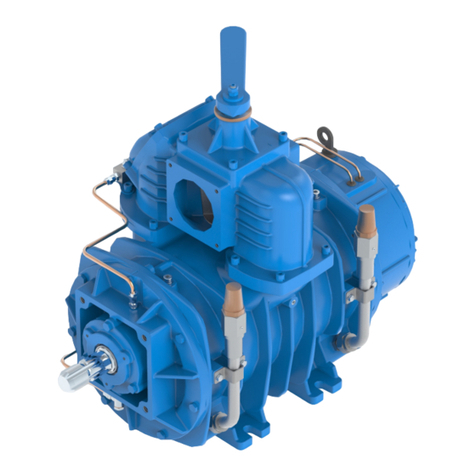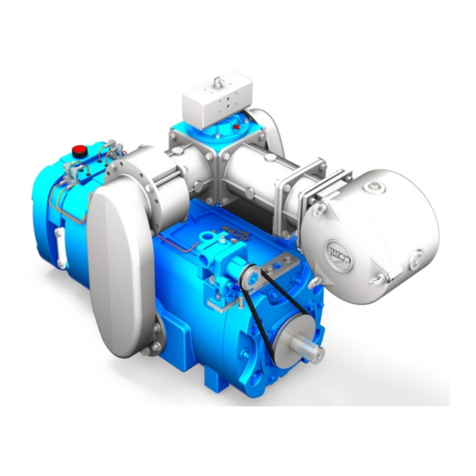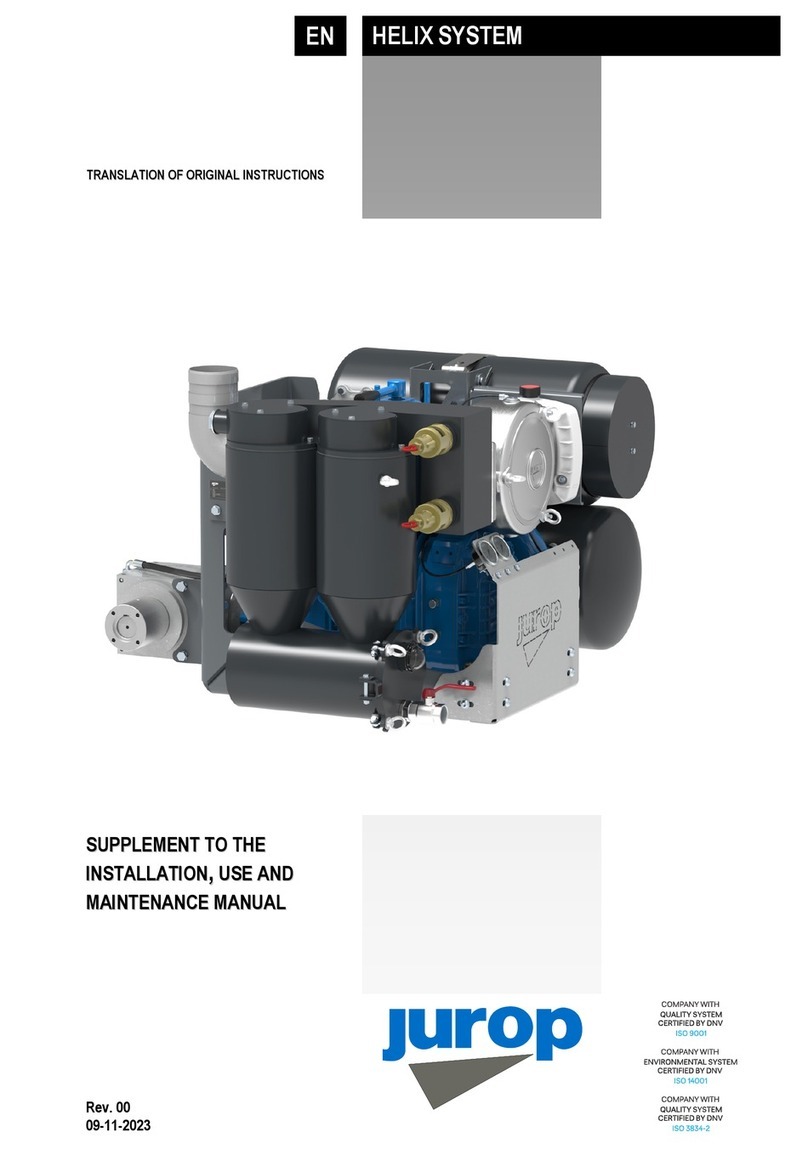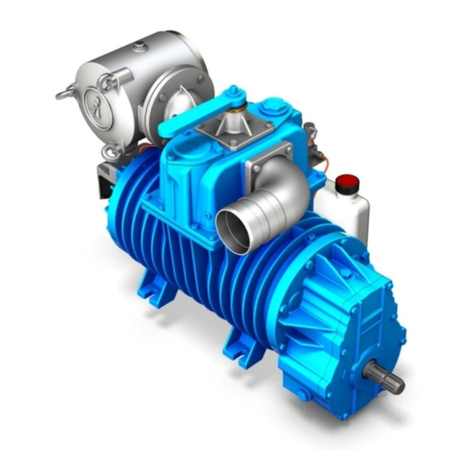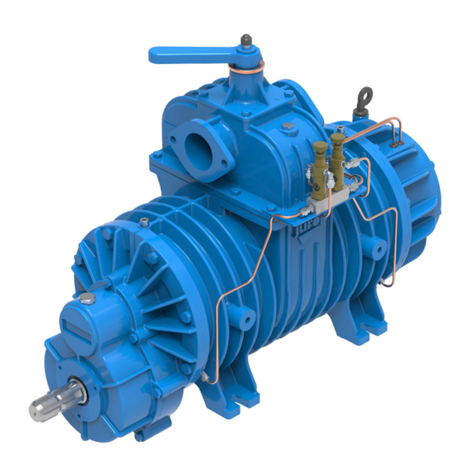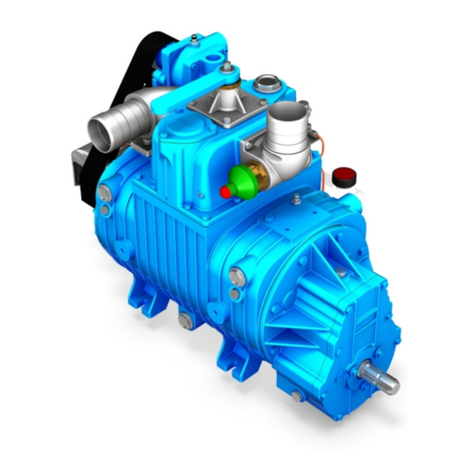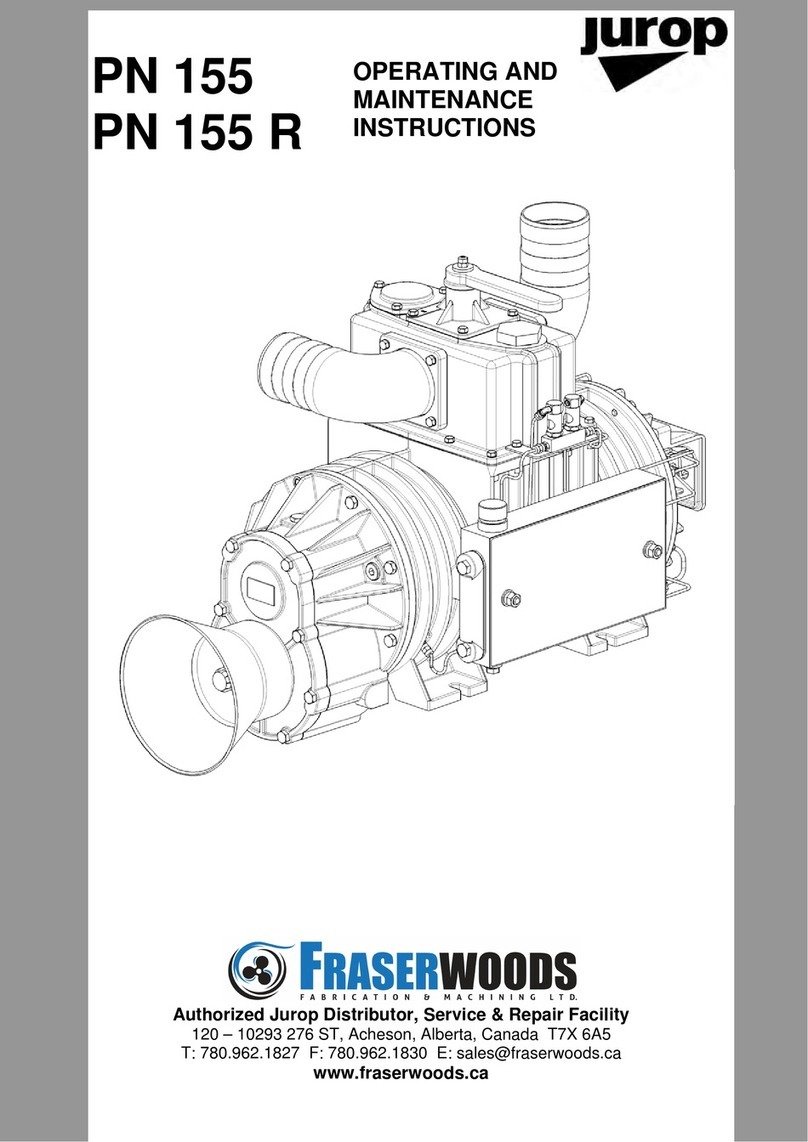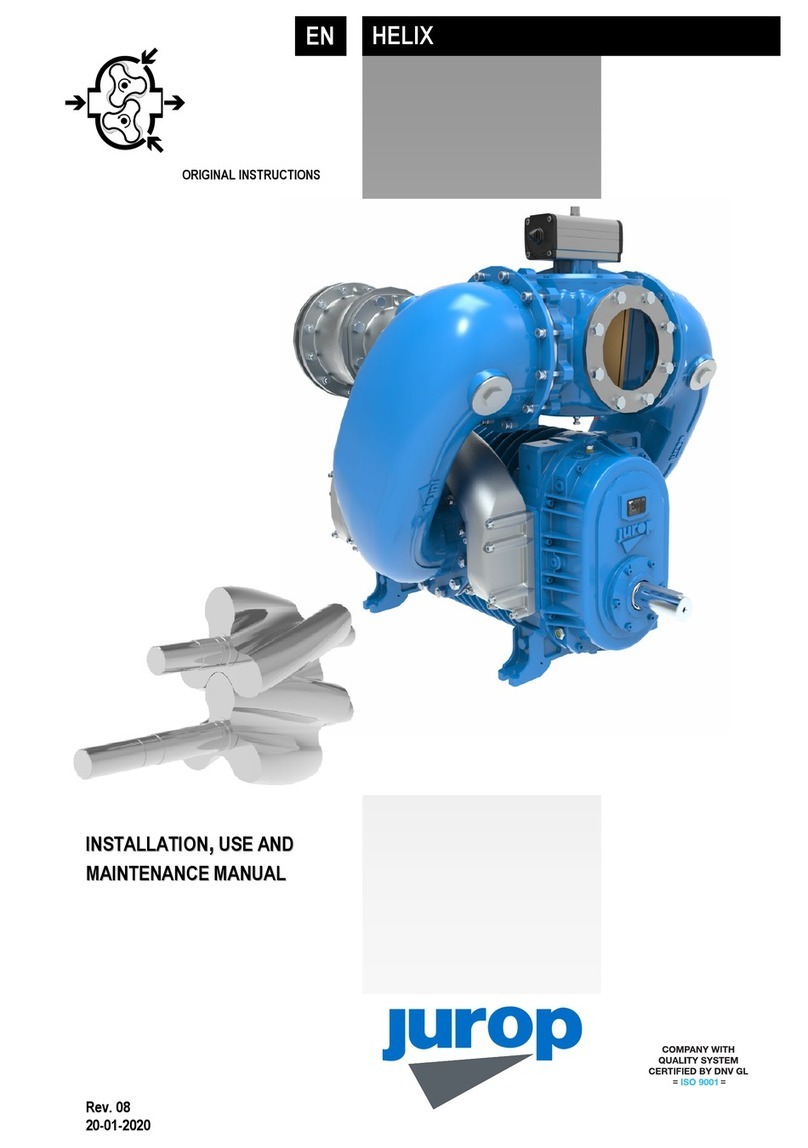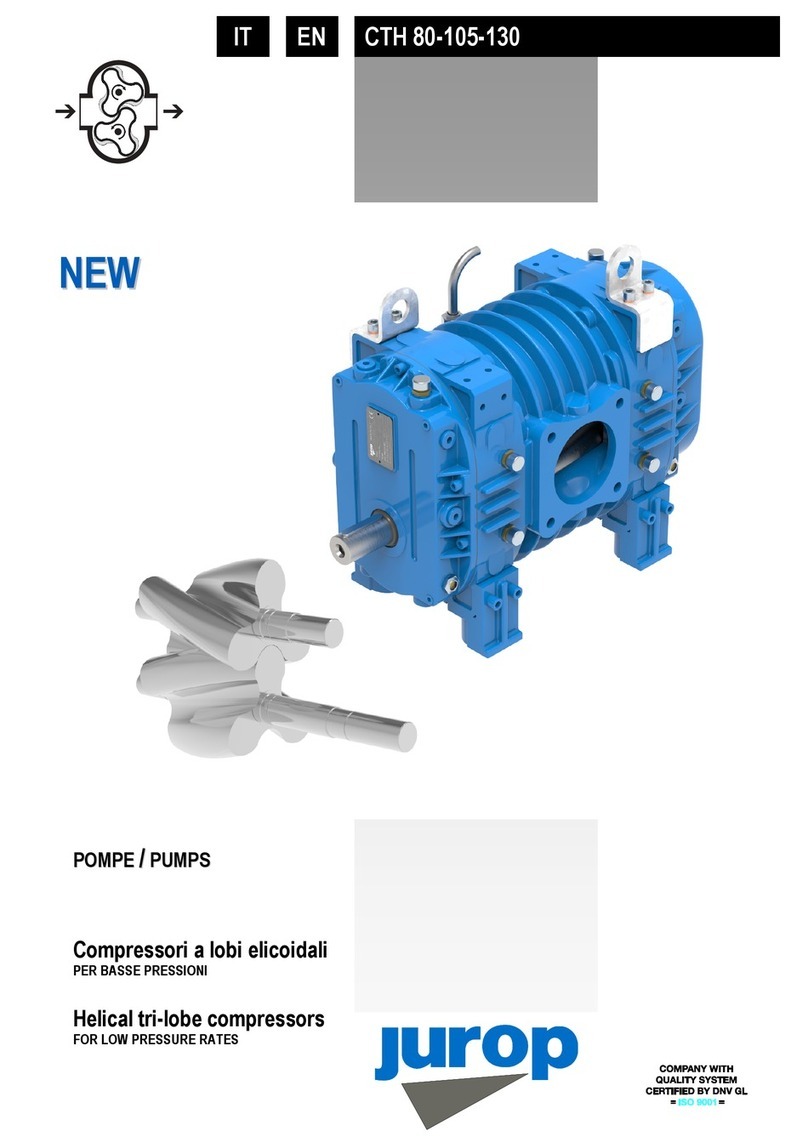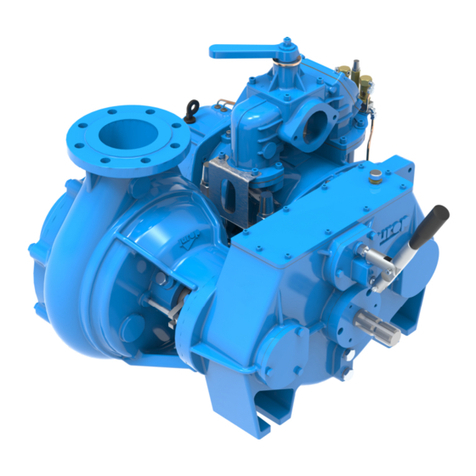
INSTALLATION
USE AND MAINTENANCE MANUAL
RV360-520
REV
20-10-2021
8 / 32
Jurop SpA
Via Crosera n° 50
33082 Azzano Decimo, PN (Italia)
EL
AX
http://www.jurop.it
2.5. Lubrication
Recommended oils: Mineral oil anti-wear
Room T° Viscosity ENI ESSO SHELL TOTAL MOBIL BP TEXACO Q8
Under 10°C ISO VG 46 Acer 46 Nuto 46 Morlina S2 B 46 Drosera MS 46 Nuto H 46 Bartran HV 46 Rando HD 46 Shubert 46
Over 10°C ISO VG 150 Acer 150 Nuto 150 Morlina S2 B 150 Drosera MS 150 Nuto H 150 Bartran HV 150 Rando HD 150 Shubert 150
Attention:
Carefully apply these prescriptions.
3.1. General recommendations
• When transporting the compressor use proper slinging. Store the
compressor in stable places.
• Installation and maintenance must be carried out with the unit
totally disengaged from its drive system and must be performed by
qualified personnel.
• Use adequate clothing (avoid ties, loose sleeves, necklaces and
so on) and suitable protection equipment (gloves, protection glasses,
boots...).
• Before each maintenance operation, stop the pump and restore
the atmospheric pressure.
• Make sure that all the parts of the unit are idle and cool, before
performing any maintenance operation.
• To prevent errors and hazardous situations, establish what each
operator is responsible for in the different maintenance operations.
• Do not start the machine if the protection devices provided for
transmissions are removed. Replace damaged part.
• Final manufacturer must make the transmission inaccessible by
means of a fixed guard or interlocked movable guard.
• Operators working nearby must avoid prolonged exposure to the
noise emitted by the aspirator, if not equipped with the proper ear-
protection devices (IPDs recommended: ear protectors).
• When the pump is running, some parts may reach very high
temperatures (above 70°C). Use all necessary precautions to avoid
contact.
• Avoid accidental suction of solids: solids may be projected at high
speed through the exhaust manifold and cause injures. A filter must be
mounted on the suction line (Mesh 55).
• Pressure relief valve: point the air flux away from the operators.
• Do not use the aspirator over its designed limits: the machine may
be damage and the operator may be injured.
Do not exceed the speed and the power supply
parameters indicated in the technical tables (see
par 2.2 – 2.4).
• Based on the final use of the decompressor, the insertion in the
housing machine and the typology of the same, the designer of the
housing machine must apply safety signals (pictograms) to warn the
operator on the risk still present. These pictograms essentially refer to
three categories:
Signals prescribing the use of Individual Protection Devices (IPDs)
such as, in this case, the use of gloves and ear protectors.
Signals indicating to pay particular attention to the dangers related
to the machine’s components, such as: risk of dragging in the
transmission equipment and contact with hot surfaces.
Signals indicating specific parts of the machine for an easier
identification, such as: greasing points, oil tanks, etc.
3.2. Intended use
• The vacuum pumps RV are designed to convey filtered air into
systems for the vacuum production (example: systems for the suction
of powders or liquid wastes). Any other usage shall be considered
improper.
• Do not sack toxic substances and inflammable or explosive
gasses, since the internal components of the pump may reach high
temperatures.
Avoid suction of toxic (poisonous) explosive or
flammable gasses because internal components
may reach high temperatures.
• Avoid suction of liquids or solids; they can seriously damage the
pump.
Attention: liquids or solids infiltrations can
seriously damage the pump.
• Do not run the pump over its designed operating limits (see par.
2.5): it may break and transmission can be damaged.
3.3. Conveyed fluids
• RV are suitable for conveying filtered air. Before conveying other
kind of gases, verify compatibility with pump’s characteristics.
• The machine was not designed and built to operate in
environments with potentially explosive atmosphere (outdoor or
indoor).
• Please contact JUROP’s Technical dept. if necessary.
3. Safety and accident prevention
